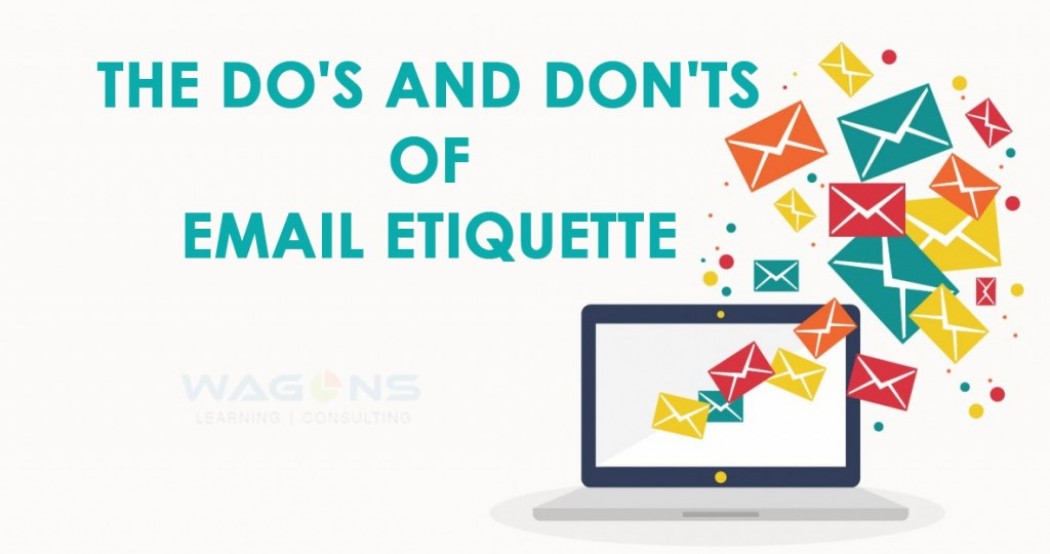
Get In Touch
Questions? Please fill this form and our team will get in touch.


Email Etiquette is the ethics of behavior that one should using while writing emails or answering them. Email Etiquette Training can be listed under behavioral training or Corporate Communication Training. Because email is more professional and secured than a phone or in-person conversation and quicker to send than a letter, it is possible for serious breaches of manners to take place.
Use of email became universal in the early 90s, the business world changed completely that time. Email now takes up a considerable portion of our workday.
International Data Corporation (IDC) study says workers spend 28 percent of their workweek reading and answering email.
We try to work faster and more efficiently, but at the same time we must not forget the common conventions that accompany any form of communication. Here are some of the dos and don’ts of email etiquette.
Many of us have to compete with the hundreds of emails clogging our inbox every day, so the clearer your subject line, the more likely your message will be read. For example, if you’re sending a request for meeting to someone, be specific and write, “Meeting request for XYZ reason.”
Emails must include a signature that tells the receiver who you are and how to contact you. Set it up to automatically appear at the end of each email. Include all of your contact details so the recipient doesn’t have to look up your address, email or phone number.
Using “Hey,” “Yo,” or “Hiya” isn’t professional, no matter how well you know the recipient. Use “Hi” or “Hello” instead. To be more formal, use “Dear (insert name).” Using the person’s name in the salutation — “Hello Robert” — is quite appropriate, but remember not to shorten a person’s name unless you’re given permission to do so.
What you think is funny has a more chances of being misinterpreted by the receiver. Humor does not interpret via email all the times. Keep humor away from business talks.
Don’t get shocked if you’re judged by your way of composing emails. For example, if your email is having misspelled words and grammatical mistakes, you may be supposed as careless or even uneducated. Check your spelling, grammar and message before sending.
Create your message as a stand-alone note, even if it is in response to a chain of emails. This means no “one-liners.” Include the subject and any references to previous emails, research or conversations. It can be frustrating and time consuming to look back at the chain to brush up on the context. Your recipient may have hundreds of emails coming in each day and likely won’t remember the chain of events leading up to your email.
Give a timely and polite reply to each legitimate email addressed to you. Even if you do not have an answer at the moment, take a second to write a response letting the sender know you received their email. Inform the sender if their email was sent to the wrong recipient, too.
Never send an angry email, or give a quick, flip response. Give your message some thoughtful consideration before sending it. If you feel angry, put your message into the “drafts” folder, and review it again later when you are calmer and have time to formulate an appropriate response.
It is far too easy to share emails, even inadvertently. If you have to share highly personal or confidential information, do so in person or over the phone. Ask permission before posting sensitive material either in the body of the email or in an attachment.
Exclamation marks and other indications of excitement such as emoticons, abbreviations like LOL, and all CAPITALS do not translate well in business communications. Leave them off unless you know the recipient extremely well. It’s also not professional to use a string of exclamation points!!!!!
It may take some practice to keep your emails professional and to the point, but you will look more polished and organized in the long run.
Source: Entrepreneur
Your email address will not be published. Required fields are marked *